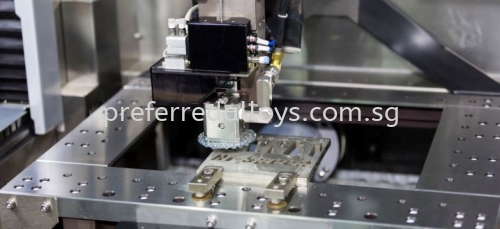Manufacturers understand that in this day and age, versatility is a must. Having the ability to utilize a variety of different processes can make your operation more competitive. This is especially true of machining, which can be done many different ways depending on the desired outcome. Being well versed in each type of machining technique will allow your business to more easily find success.
Machining is one type of manufacturing process. Other processes include: casting or molding, which is used to shape molten metal or plastic; joining, using welding, soldering, brazing or adhesive bonding to permanently combine two separate work pieces; stamping, which is when material is cut away from the work piece; and forming, which uses compression to force the material into the desired shape.
When working with metal, there is perhaps no technique more important than machining. Today, we are going to examine the different types of machining processes and discuss when they are best utilized.
What is machining?
Machining is generally defined as a manufacturing process that relies on the use of tools to remove the unwanted portions of a work piece while leaving only the desired shape. In most cases a cutting tool is used, but other frequent actions include boring, grinding, or shearing. The formal name for this process is known as subtractive manufacturing, because the primary action is the removal of undesired material. Another key aspect of the process is that the tool is controlled in some manner.
Controlled machining in the modern age normally relies on machine tools that have a way to constrain the work piece so that a guided movement of the machine parts is possible. The tool path is the name used for the relative movement between the work piece and the cutting tool. Rarely would a machinist be working completely freehand. In fact, with many modern machines, the cutting action is entirely computer controlled. These machines are known as Computer Numerical Control, or CNC. With this technology, the machining process can be completely automated and downtime is at a minimum, resulting in an optimal production rate.
What are the main types of machining?
Perhaps the most common form of machining besides cutting is known as milling. This is when rotary cutters are used to shape or remove material from the work piece by advancing it into the metal. The machinist will be able to vary the direction, head speed and feed rate in order to maintain control over the finished outcome. The aforementioned CNC machines are able to perform the milling process in an automated manner.
Another example is drilling, which is a form of machining involving a drill bit that is used to cut a hole in the metal work piece. Machining drill bits are generally multi-point and rotated in a circular motion down the length of the metal. The drill bit might be rotated more than a thousand revolutions per minute.
Another option is turning, in which the work piece is rotated while a single-point cutting tool moves in parallel to the axis of rotation. This normally takes place on a lathe and is performed on the work piece’s external surface. If instead the turning involves the internal surface, we refer to the action as boring. Thus, you might hear these two complementary processes referred to as turning and boring.
Your Trusted Technical Resources Partner
When working with metals such as aluminum and stainless steel, it’s critical that you know how to handle them so as to ensure the desired outcome. Machining is a key part of the production process and involves a variety of different techniques and tools, and a great deal of experience and skill are necessary. That’s why we recommend working with partners who not only understand the materials you are working with but can assist you on how to get the most out of your production process.
The dedicated and professional team at Preferred Alloys makes it a point to support our customers at every step, beginning with material selection. We can deliver custom materials in whatever shape and form you need. Contact us today to learn more about what type of aluminum or stainless steel is right for your application.
Published : 28-Dec-2022


